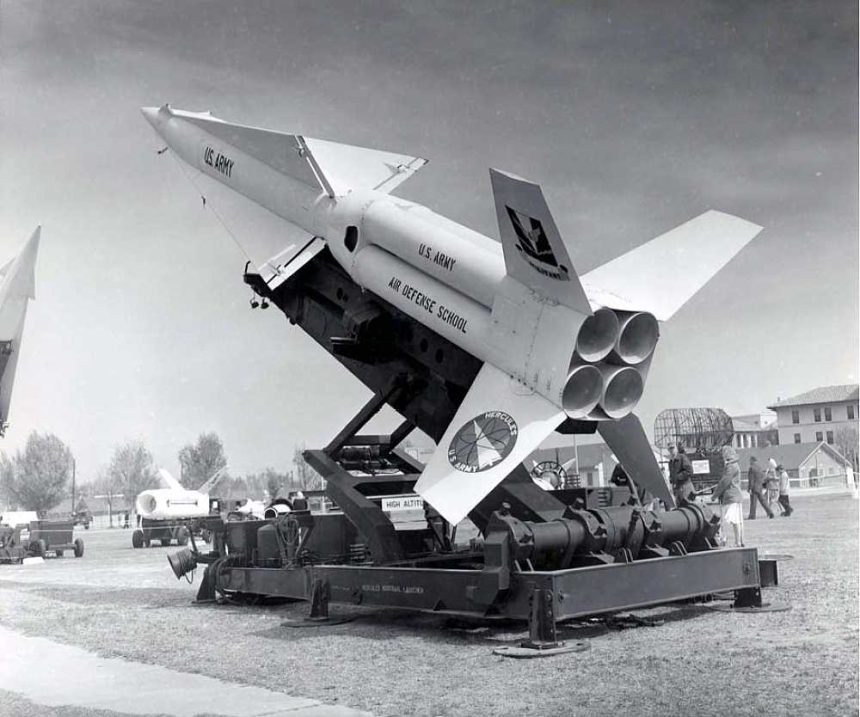The Last U.S. Above Ground Nuclear Test Was Oddly Predictive of Current Missile Defense Programs.
July, 1968. Sunday Morning. 100,000 Feet Over the Midwestern United States.
This is a last, desperate attempt at survival. It is codenamed “Satan”, and it is headed for Nebraska. Plummeting down over the continental United States the Soviet ICBM, designated R-36M, is a nightmare weapon. The world’s heaviest nuclear armed, multiple warhead doomsday weapon, “Satan” carries a planet-smashing fusillade of 10 nukes, each in the massive 500-kiloton range.
This morning Satan begins the unthinkable; an all-out nuclear slugfest between the Soviet Union and the United States. This one Soviet ICBM will destroy the Strategic Air Command headquarters at Offutt AFB, cripple a U.S. nuclear response and deliver the opening gut-punch of World War III. There is only one hope now.
A MIM-14 Nike Hercules surface-to-air missile leaps vertically on a roiling cushion of smoke from a launch facility in the Midwestern U.S. The spear-shaped white missile shatters the sound barrier as it vaults upward piercing puffy early morning cumulus in a blue sky accelerating toward near-space. The crack of a sonic boom reaches the ground far below, its smoke trail drifting sideways on light breeze while the missile races upward toward its target.
As the Soviet Satan ICBM arcs downward in its plummet toward Armageddon the Nike Hercules makes last millisecond Hail-Mary corrections to kill it in the outer atmosphere. It doesn’t need to be very accurate. This Nike Hercules, the first, and last, line of defense against a nuclear attack from Russia, is carrying its own W31/M97 20-kiloton nuclear warhead.
The two missiles miss each other by a half-mile, but it’s close enough. A second, new sun in the northern hemisphere casts pivoting morning shadows across Nebraska cornfields as it blooms a blinding white detonation where the real sun will be hours from now at about high noon.
The Russian Satan is incinerated in the blinding nuclear flash of the Nike Hercules 20 miles above the ground. As the “red phone” between the White House and the Kremlin begins to buzz, WWIII is averted. Barely.
It never happened, thankfully. But the last atmospheric nuclear test conducted by the United States took place 55-years ago, on November 4, 1962.

The last detonation of a nuclear weapon in our atmosphere by the U.S. took place 860-miles southwest of Hawaii above a remote, Pacific Atoll called Johnston Island. This final American above-ground nuclear test was an experiment to determine the viability of an anti-ballistic missile defense system, a project that rings oddly relevant today amid the North Korean crisis and looming threat of Kim Jong-un.
In contrast to current, precision anti-ballistic missile defense systems that use kinetic energy and direct impact combined with ultra-accurate high speed guidance systems to intercept approaching ICBMs before they reach their targets in the U.S., the tests above the Pacific 55 years ago were like using a sledgehammer. A nuclear sledgehammer.
The final U.S. warhead detonated in the atmosphere was riding on top of a Nike Hercules missile. The last launch and detonation test on November 4, 1962 was codenamed “Tightrope”. It was just one of a series of tests that were collectively codenamed “Operation Fishbowl”.
The top-secret project created a remarkable film record of high altitude nuclear detonations. It began somewhat inauspiciously in June of 1962 with a failed test, then finally yielded results with the first successful detonation in the series in July. The project continued until November 4 of that year.
The first successful test in the series was launched on a Thor missile. It created significant electromagnetic pulse syndrome (EMP) and actually knocked out electronics including streetlights and telephones over 900 miles away in Hawaii. It also damaged some satellites in orbit near the detonation.
As the lethal game of nuclear brinkmanship between the U.S. and Russia reached its nearly tragic zenith, U.S. President John F. Kennedy signed the Partial Test Ban Treaty the following year on August 5, 1963. The agreement created a new set of international regulations that effectively halted the large-scale detonation of nuclear weapons in the atmosphere.
The high-altitude nuclear tests above the Pacific may have signaled the end to one nuclear era, but their attempt to field an effective anti-ICBM defense system rings remarkably relevant today, 55 years later.









